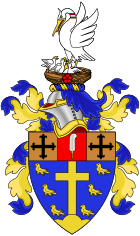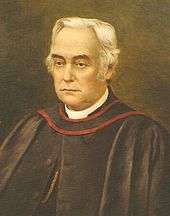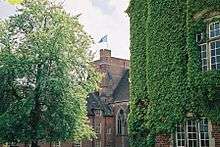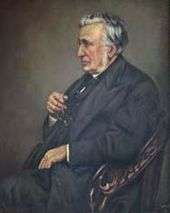Ardingly College
 | |
| Motto |
Latin: Beati mundo corde (Blessed are the pure in heart) |
|---|---|
| Established | 1858 |
| Type |
Independent day and boarding Public school |
| Religion | Church of England |
| Head Master | Ben Figgis |
| Provost | Lindsay Urwin |
| Chairman of Governors | Jim Sloane |
| Founder | Nathaniel Woodard |
| Location |
College Road Ardingly West Sussex England |
| DfE number | 938/6200 |
| Students | 416 |
| Gender | Coeducational |
| Ages | 13–18 |
| Houses | 8[1] |
| Colours | Teal, Black & Gold |
| Publication |
Ardingly Annals Old Ardinian Logos Wonderful Bird Ardingly Journal Scientia |
| Former pupils | Old Ardinians |
| Visitor | The Bishop of Chichester ex officio |
| Affiliation | Woodard Corporation |
| Website | Official website |
Ardingly College /ˈɑːrdɪŋlaɪ/[2] is a selective co-educational boarding and day independent school near Ardingly, West Sussex, England. The school is a member of the Headmasters' and Headmistresses' Conference and of the Woodard Corporation of independent schools and as such has a strong Anglo-Catholic tradition.[3] Originally a boarding school for boys, it became fully co-educational in 1982.[4] For the academic year 2015/16, Ardingly charged day pupils up to £7,710 per term, making it the 29th most expensive HMC day school.[5] It is a public school in the British sense of the term.
There are currently about 416 pupils enrolled at the school, aged between 13 and 18. Additionally, there are about 520 pupils aged from 2½ to 13 at The Ardingly College Preparatory school, whom it shares some common grounds with.[6][7][8][9]
The school is regularly positioned amongst the top ten IB schools in the United Kingdom, and as reported by Tatler, has won the Royal Society of Chemistry Top of the Bench Competition.[10]
History
Ardingly College was originally founded as "St Saviour’s College", Shoreham in 1858 by Canon Nathaniel Woodard whose aim was to provide education firmly grounded in the Christian faith.[11] St Savior’s College opened on 12 April 1858, occupying the New Shoreham buildings in the lee of the churchyard of St Mary de Haura which had been vacated by another Woodard School, Lancing College, when it moved to its permanent home in April 1858.[11] The site at Shoreham however was never intended to be permanent and it was left to Woodard to scour the South of England for a suitable permanent location for St Saviour’s School.[11]
In 1861 Woodard came across the 196 acre (0.79 km²) Saucelands estate at the southern edge of Ardingly village, which was acquired in 1862 for £6,000.[11] Woodard employed Richard Carpenter as the school's architect, and the foundation stone at Ardingly was laid on 12 July 1864 by Granville Leveson-Gower, 2nd Earl Granville.[11] St Saviour’s College moved to the partially completed site at Ardingly on 14 June 1870 when the new school was officially opened by the Bishop of Chichester, with the inaugural sermon delivered by Samuel Wilberforce.[11]
Today Ardingly occupies a 420 acre (1.7 km²) site situated in an Area of Outstanding Natural Beauty.[12] Ardingly is divided into three autonomous schools, comprising a Pre-Preparatory School catering for pupils aged 2½ -7, Junior School catering for pupils aged 7–13 and Senior School for pupils aged 13–18.[13] Both Junior and Senior Schools accommodate boarders who make up the majority of the Senior School student population.[14] All Junior and Senior School students are assigned to a boarding house in which boarders live and study and where day-pupils have study areas. In all, the college has approximately 750 pupils.[15] According to the Good Schools Guide 2008, Ardingly College has admitted more pupils this year than at any point in its history and places are at a premium.[16]

The college's Combined Cadet Force was established in 1902 in the wake of the Second Boer War.[11] Around 1,200 Old Ardinians went on to fight in the First World War, 146 of whom were killed, along with two former members of staff; their names are recorded on the war memorial in the college chapel.[11] In addition, 88 Old Ardinians died in the Second World War; their names are recorded in a book of remembrance in the crypt and on the memorial board in the Under.[11]
In 1958 the school celebrated its centenary. On 9 June 1958, as part of the celebrations, the Queen and the Duke of Edinburgh visited Ardingly.[11] A stone plaque on the terrace parapet commemorates the visit, where she "beheld the view".[11] Later that week, on 14 June 1958, the then Prime Minister, Harold MacMillan, visited the school to open the Centenary Building, which comprises the college cricket pavilion and upstairs Centenary Room.[11] On 8 May 2008, the Duke of Kent visited Ardingly as part of its sesquicentenary celebrations and officially opened a new teaching block at the pre-preparatory school.[17]
School terms
There are three academic terms in the year:[18]
- The Michaelmas term, from early September to mid December. New pupils are now admitted only at the start of the Michaelmas Half, unless in exceptional circumstances.
- The Lent term, from mid-January to late March.
- The Trinity term, from late April to late June or early July.

Similarly, there are five academic years:[19]
- "Shell", pupils in their first year at Ardingly (year 9).
- "Remove", pupils in their second year at Ardingly (year 10).
- "Fifth", pupils in their third year at Ardingly (year 11).
- "Lower Sixth", pupils in their fourth year at Ardingly (year 12) which start studying for their A levels or IB.
- "Upper Sixth", pupils in their fifth and last year at Ardingly (year 13).
Academic
In 2014, 65% of GCSE entries were awarded A* or A grades.[20] Since 2001 Ardingly has offered the International Baccalaureate Diploma Programme to sixth-formers in addition to traditional A-Levels.[21] In 2008 Ardingly was ranked 7th in the UK in The Independent's league table of schools offering both an A-Level and IB curriculum. In 2012 44% of A-Level entries were awarded A* or A grades, while IB students averaged 38 points, equivalent to A*AAA at A-Level. 18% of IB students achieved 40 or more points putting them in the top 5% worldwide.[22] In 2016, Ardingly's IB students averaged 39 points, placing it 9th on the table of schools in the United Kingdom.[23]
Sport
Ardingly has several sports available to both prep students and college students. Athletics and cross country, cricket, football, hockey, netball, rounders, swimming, tennis, squash, and fencing are all open to prep students.[24] The same set is offered for college students with the addition of badminton, rugby, basketball, scuba diving, and sailing, and the exception of rounders, cross country, and swimming.[25][26] Ardingly have won the Independent Schools Football Association Cup three times, in 1997-98, 2014–15 and 2015-16.
Head Masters

- 1858 – 1894 Frederick Mertens
- 1894 – 1904 Francis Hilton
- 1904 – 1911 Herbert Rhodes
- 1911 – 1914 Marchant Pearson
- 1915 – 1932 Thomas Wilson
- 1933 – 1946 Ernest Crosse DSO MC
- 1947 – 1961 George Snow
- 1962 – 1980 Christopher Bulteel MC
- 1980 – 1998 James Flecker
- 1998 – 2007 John Franklin
- 2007 – 2014 Peter Green
- 2014 – Ben Figgis
Houses
| House | Age | Gender | Boarding/Day |
|---|---|---|---|
| Mertens | Year 9-12 | M | Boarding |
| Hilton | Year 9-12 | M | Boarding |
| Crosse | Year 9-12 | M | Boarding & Day |
| Rhodes | Year 9-12 | M | Day |
| Aberdeen | Year 9-12 | F | Boarding |
| Toynbee | Year 9-12 | F | Boarding |
| Neal | Year 9-12 | F | Day |
| Woodard | Year 13 | M/F | Boarding |
Ardingly College Lodge

The school has its own Masonic lodge, Ardingly College Lodge, which is a member of the Public School Lodges council.[27] The lodge, which is open to male Old Ardinians as well as those with an affiliation to the college, was founded in 1922 by the then headmaster, Thomas Erskine Wilson, together with masters, the Provost of the school and the Bishop of Lewes.[28]
Combined Cadet Force
The Ardingly College Combined Cadet Force, or CCF, has existed in its various forms since 1902, with the outbreak of the Second Boer War. The Ardingly College CCF is split into six categories. These are Army, Royal Navy, Royal Air Force, Royal Marines, Drum Corps and Marching Band. The Army section is affiliated to the Princess of Wales's Royal Regiment, allowing cadets to take part in military and adventure training not readily available to non-cadets.[29]
Southern Railway V Schools class
The school lent its name to the eighteenth steam locomotive (Engine 917) in the Southern Railway's Class V of which there were 40.[30] This class was also known as the Schools Class because all 40 of the class were named after prominent English public schools. Ardingly, as it was called, was built in 1934 and withdrawn in 1962.[30]
Fees
As of the academic year 2016/17, Shell-5th boarding fees are £30,480 per annum while Shell-5th day fees are £22,380 per annum.[31] Sixth form boarding fees are £32,130 per annum, while Sixth form day fees are £23,610 per annum.[31]
Media coverage
The school was featured in the second episode of the BBC series Stiff Upper Lip: An emotional History of Britain, where the protagonist Ian Hislop returns to Ardingly, his former school, to describe his experiences there as well as the impact of the British public school system in shaping men in Victorian era.[32]
Dinosaur findings
In February 2014, the BBC confirmed that several fossils had been discovered at the school grounds. The remains were found by staff and pupils during the construction of a new boarding house for girls. According to the Natural History Museum and Imperial College in London, some of these bones were around 140 million years old.[33]
Notable alumni
Notable former pupils include four former Conservative MPs, Private Eye editor Ian Hislop,[34] actor Terry-Thomas,[35] author Neil Gaiman, band leader Victor Silvester,[36] Formula One World Champion Mike Hawthorn, and Crufts dog show founder Charles Cruft.
Further reading
- Argent, N; Ardingly College 1939–1990. Autolycus Press (1991)
- Gibbs, D; A School with a View: A History of Ardingly College 1858–2008. James & James Publishers Ltd (2008)
- Letts, S; Ardingly: Its Building and Buildings. Old Ardinians Society (1985)
- Perry, R; Ardingly 1858–1946: A History of the School. Old Ardinians Society (1951)
See also
References
- ↑ "Overview | Ardingly College". ardingly.com.
- ↑ Wells, John C. (2008), Longman Pronunciation Dictionary (3rd ed.), Longman, ISBN 9781405881180
- ↑ "HMC Schools". Archived from the original on 10 June 2011. Retrieved 2008-05-12.
- ↑ "UK School Guide - Ardingly College". Archived from the original on 12 April 2008. Retrieved 2008-05-12.
- ↑ http://www.privateschoolfees.co.uk/uploads/1/1/2/4/11247026/day_fees_2015_2016.pdf
- ↑ http://www.ardingly.com/Pre-Prep-Facilities
- ↑ http://www.ardingly.com/Prep-Facilities
- ↑ http://www.ardingly.com/Middle-Woodard-School
- ↑ http://www.ardingly.com/Woodard-School-Sixth-Form
- ↑ http://www.tatler.com/guides/schools-guide/2016/public/ardingly-college
- 1 2 3 4 5 6 7 8 9 10 11 12 Gibbs, David (2008). A School with a View: A History of Ardingly College 1858-2008. James & James Publishers Ltd. ISBN 978-1-903942-83-3.
- ↑ "Ardingly College". Archived from the original on 17 July 2008. Retrieved 2008-07-20.
- ↑ "Ardingly College - One College, Three Schools". Archived from the original on 13 June 2008. Retrieved 2008-06-29.
- ↑ "Woodard Schools - Ardingly College". Archived from the original on 6 October 2008. Retrieved 2008-07-20.
- ↑ "Department for Children, Schools and Families - Ardingly College". Retrieved 2008-07-20.
- ↑ http://goodschoolsguide.co.uk/school/ardingly-college.html
- ↑ "Ardingly College - 150th Anniversary Celebration". Archived from the original on 24 July 2008. Retrieved 2008-07-22.
- ↑ "The Michaelmas Half". Ardingly College.
- ↑ "Years at Ardingly". Ardingly College.
- ↑ http://www.ardingly.com/Ardingly_College_Sussex/News_Independent_Schools_Sussex/Exam_Results_Independent_Schools_Sussex_detail.php?Ardingly-students-celebrate-the-College-s-best-set-of-GCSE-results---for-the-second-year-running.-16
- ↑ "ISBI Schools - Ardingly College". Retrieved 2008-07-20.
- ↑ http://www.ardingly.com/Ardingly_College_Sussex/News_Independent_Schools_Sussex/Exam_Results_Independent_Schools_Sussex_detail.php?Excellent-IB-achievements-for-our-2012-cohort-9
- ↑ http://www.best-schools.co.uk/uk-school-league-tables/ib-schools-large-cohort/
- ↑ http://www.ardingly.com/Prep_Schools_Sussex_England/Sport_College_Sussex/Sport_School_Sussex.php
- ↑ http://www.ardingly.com/Ardingly_College_Sussex/Sport_College_Sussex/Sport_School_Sussex_detail.php?Sport-at-Ardingly-1
- ↑ http://www.ardingly.com/Ardingly_College_Sussex/Sport_College_Sussex/Sport_School_Sussex.php
- ↑ "Public School Lodges' Council". Retrieved 2008-07-20.
- ↑ "Ardingly College Lodge". Retrieved 2007-02-07.
- ↑ http://www.ardingly.com/Charity-and-Service
- 1 2 "Southern Railway Schools Class". Retrieved 2008-06-29.
- 1 2 http://fluencycontent-schoolwebsite.netdna-ssl.com/FileCluster/ArdinglyCollege/Mainfolder/Documents/Fees/Fees-2016-17.pdf
- ↑ http://www.bbc.co.uk/programmes/b01nd1ly
- ↑ http://www.bbc.co.uk/news/uk-england-sussex-26051391
- ↑ ‘HISLOP, Ian David’, Who's Who 2016, A & C Black, an imprint of Bloomsbury Publishing plc, 2016
- ↑ ‘TERRY-THOMAS, (Thomas Terry Hoar Stevens)’, Who Was Who, A & C Black, an imprint of Bloomsbury Publishing plc, 1920–2016
- ↑ ‘SILVESTER, Victor Marlborough’, Who Was Who, A & C Black, an imprint of Bloomsbury Publishing plc, 1920–2016
External links
| Wikimedia Commons has media related to Ardingly College. |
Coordinates: 51°02′26″N 00°05′23″W / 51.04056°N 0.08972°W
